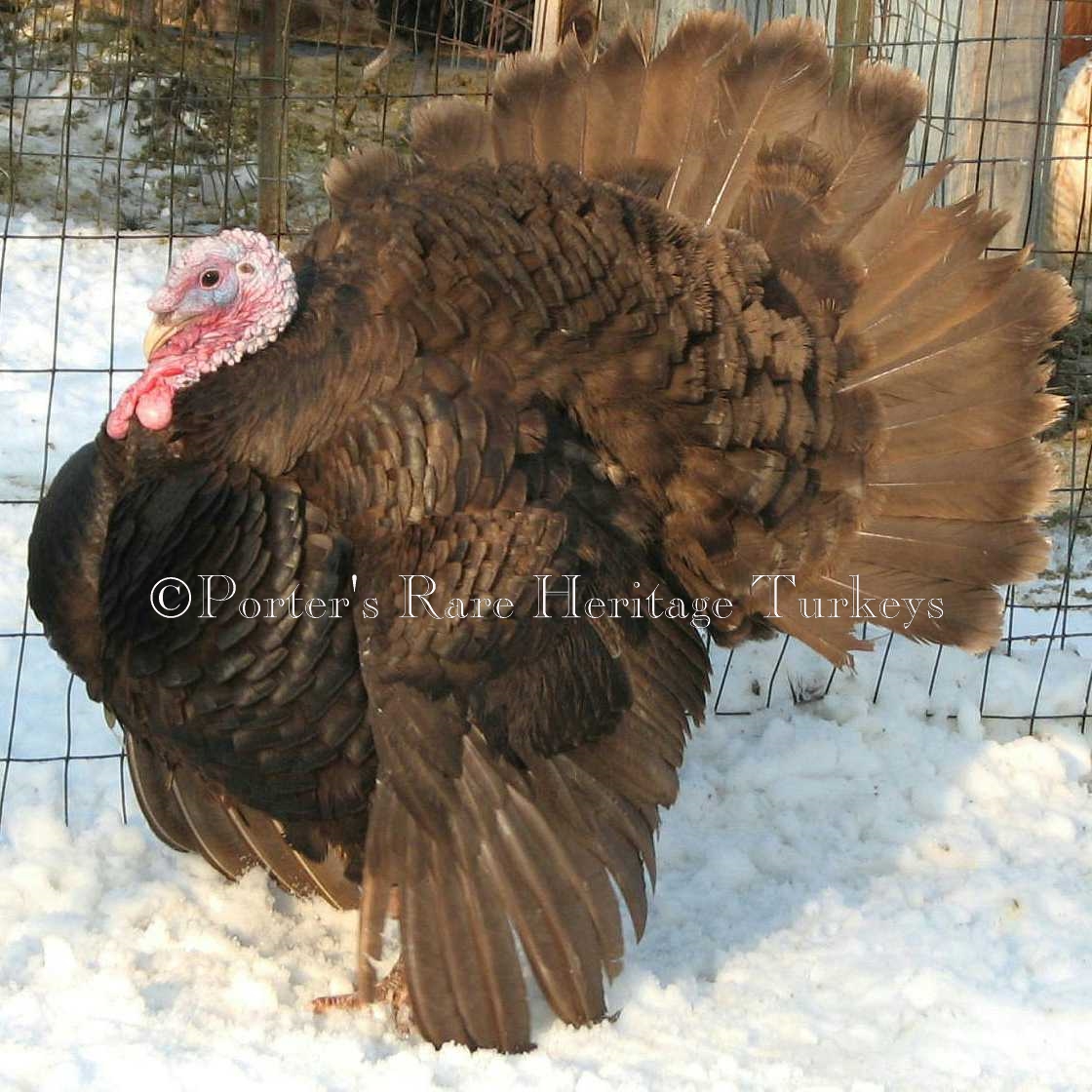
The name describes the color of its feathers, shanks, and feet. They used to be common in the south and in France. This turkey variety was well established in the southern part of the U.S. before the Civil War, which caused a great decline in turkey breeding throughout the southeastern states, and the Chocolate turkey never recovered to pre-war popularity.
Chocolate describes a variation of the plumage color due to the epistatic interaction between black and brown genes. This means that they are basically a black bird diluted to the chocolate coloration by the presence of the sex-linked brown gene. The toms have two (ee) brown genes, while the hens have only one (e-).
The genotype for a purebred chocolate is BBee for toms and BBe- for hens. Black-based with brown dilution genes.
The poult at hatch has a down color pattern resembling a black poult, with brown pigment substituting where the black would normally be. The adult bird has a solid milk chocolate color.
Any white barring or light-colored spots in the wings, bronze patterns, or white tipping in the feathers are faults in this variety.
Most chocolate turkeys today are not pure, as some are carriers of (b)bronze, (c)white, and (n)Narragansett genes. Some may even carry one dose of (r)red as well.
So, when breeding these unpure chocolates, a few auburns, silver auburns, whites, as well as red carriers, could pop out.
I have developed a line of chocolates to be the correct, solid chocolate brown color and true breeding as well, hopefully. However, it is hard to say if anything may still be hiding under the brown color.
Weights: Old toms approx. 33 lbs. and Old hens 18 lbs.

